I am working with Microsoft Graph and have created an app that reads mail from a specific user.
However, after getting an access token and trying to read the mailfolders, I receive a 401 Unauthorized answer. The detail message is:
The token contains no permissions, or permissions cannot be understood.
This seems a pretty clear message, but unfortunately I am unable to find a solution. This is what I have done so far:
- Registering the app on https://apps.dev.microsoft.com
Giving it application permissions Mail.Read, Mail.ReadWrite (https://learn.microsoft.com/en-us/graph/api/user-list-mailfolders?view=graph-rest-1.0)
The permissions are:

 - Written the code below to acquire an access token:
- Written the code below to acquire an access token:
// client_secret retrieved from secure storage (e.g. Key Vault) string tenant_id = "xxxx.onmicrosoft.com"; ConfidentialClientApplication client = new ConfidentialClientApplication( "..", $"https://login.microsoftonline.com/{tenant_id}/", "https://dummy.example.com", // Not used, can be any valid URI new ClientCredential(".."), null, // Not used for pure client credentials new TokenCache());
string[] scopes = new string[] { "https://graph.microsoft.com/.default" };
AuthenticationResult result = client.AcquireTokenForClientAsync(scopes).Result;
string token = result.AccessToken;
So far so good. I do get a token.
Now I want to read the mail folders:
url = "https://graph.microsoft.com/v1.0/users/{username}/mailFolders"; handler = (HttpWebRequest)WebRequest.Create(url); handler.Method = "GET"; handler.ContentType = "application/json"; handler.Headers.Add("Authorization", "Bearer " + token); response = (HttpWebResponse)handler.GetResponse(); using (StreamReader sr = new StreamReader(response.GetResponseStream())) { returnValue = sr.ReadToEnd(); }
This time I receive a 401 message, with the details:
The token contains no permissions, or permissions cannot be understood.
I have searched the internet, but can’t find an answer to why my token has no permissions.
Thanks for your time!
update 1
If I use Graph Explorer to read the mailfolders, then it works fine. Furthermore: if I grap the token id from my browser en use it in my second piece of code, then I get a result as well. So, the problem is really the token I receive from the first step.
